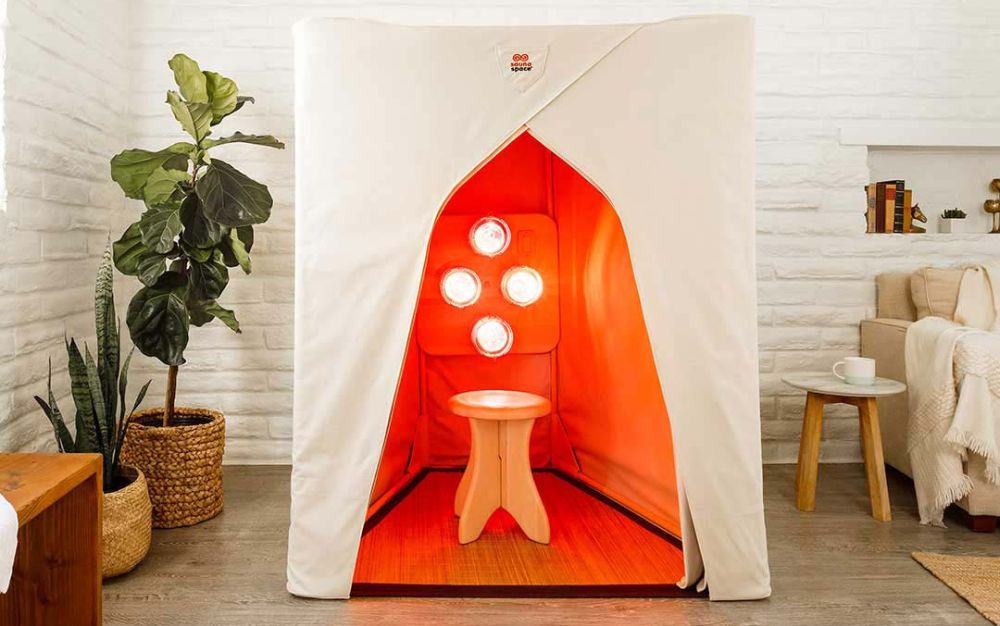Introduction
Hello Reader Beyondfitwell.com! Are you interested in learning how to create a health bar in Scratch? Look no further, as this comprehensive step-by-step guide will walk you through the process. Whether you’re a beginner or experienced with Scratch, this guide will equip you with the knowledge and skills needed to confidently create an engaging health bar. So let’s dive in and start making your health bar project a reality!
Creating a health bar in Scratch is an exciting endeavor that allows you to add a vital component to your game or interactive project. Scratch, a widely popular platform, empowers users to express their creativity and develop their own interactive projects without any prior coding knowledge. With its user-friendly interface and intuitive block-based programming, Scratch makes it accessible for anyone to create exciting digital experiences.
A health bar plays a crucial role in game design, providing players with important information about their character’s health and well-being. It serves as a visual representation of the current health or vitality of a character or object, ensuring players can easily monitor their progress and make informed decisions during gameplay. By implementing a health bar, you can enhance the gameplay experience, add an element of challenge, and make your project feel more complete and polished.
Throughout this guide, we will cover each step in detail, ensuring you grasp the fundamental concepts and techniques required for building a functional and visually appealing health bar. From setting up the stage to creating the health bar sprite and scripting its behavior, you’ll gain a comprehensive understanding of the entire process.
To facilitate your understanding, we will provide troubleshooting tips for common issues you may encounter while creating a health bar in Scratch. Additionally, we’ll share valuable tips for further customization, such as adding sound effects, implementing power-ups, or even exploring multiplayer functionality. These additional features can elevate your health bar project to new heights, making it stand out and leave a lasting impression on your audience.
By the end of this guide, you’ll possess the necessary skills and knowledge to create an impressive health bar in Scratch. Whether you’re a game enthusiast, a budding developer, or simply someone looking to explore the world of interactive projects, this guide will empower you to bring your vision to life. So, without further ado, let’s embark on this exciting journey of creating a captivating health bar in Scratch!
For a comprehensive guide on creating a health bar in Scratch, be sure to read our pillar article on the topic.
Understanding Health Bars in Scratch
When it comes to creating a game or interactive program in Scratch, understanding the concept and importance of a health bar is crucial. A health bar serves as a vital tool in providing users with an easy-to-read visual representation of the current health or vitality of a character or object within the game or program.
What is a Health Bar?
Simply put, a health bar is a graphical representation that allows users to easily monitor the status of their character’s health during gameplay. As the character takes damage or undergoes certain events, the health bar visually updates to reflect the changes in their health. By incorporating sprites and scripts into Scratch, developers can dynamically update the appearance of the health bar based on specific conditions or events.
The Importance of a Health Bar
A health bar serves several important purposes in a game or interactive program:
1. Visual Indicator of Progress: A prominent function of a health bar is to provide players with a visual indicator of their character’s progress and success. By monitoring the health bar, players can easily determine if their character is in good health or in need of attention and recovery. This allows them to strategize and make informed decisions during gameplay.
2. Enhances Gameplay Experience: Introducing a health bar adds an element of challenge and strategy to the game. Players are required to constantly assess their character’s health and make appropriate decisions to maintain or restore it. This dynamic element enhances the overall gameplay experience, making it more engaging and immersive for the player.
3. Adds Polish and Professionalism: Including a health bar in a game or interactive program not only provides vital information to the players but also adds an aesthetic appeal. It contributes to the overall polish and professionalism of the game, making it feel more complete and well-executed. By investing time and effort into creating a visually appealing health bar, developers can elevate the quality and overall impression of their project.
Through the seamless integration of sprites and scripts, Scratch empowers developers to create health bars that effectively communicate the vitality of characters or objects. By grasping the concept and significance of health bars, developers can design more engaging games and interactive programs that captivate and challenge their users.
Creating a Health Bar in Scratch
Step 1: Setting Up the Stage
Before we can create a health bar in Scratch, we need to set up the stage. The stage serves as the backdrop for our game or interactive project, and it’s important to choose a suitable backdrop that complements the theme or setting of our game. For example, if our game is set in a medieval fantasy world, we could select a castle or forest backdrop. This helps to create a cohesive and immersive experience for the player.
Setting up the stage also involves considering the overall design and layout of our project. We can position other elements, such as characters or objects, on the stage to create a visually appealing and engaging environment for our health bar.
Step 2: Creating the Health Bar Sprite
Now that we have the stage ready, let’s create the health bar sprite. A sprite is a character, object, or graphic that can be controlled and animated in Scratch. To create the health bar sprite, we can utilize the “Choose a Sprite from Library” button in the Scratch interface. There, we can explore a variety of pre-existing health bar sprites and select a suitable one that aligns with the style and theme of our game. Alternatively, if we have the artistic ability, we can also draw our own health bar sprite using Scratch’s built-in drawing tools. This allows us to customize the appearance of our health bar and make it unique.
When creating the health bar sprite, it’s important to consider its size and position on the stage. We want the health bar to be easily visible and accessible to the player, so placing it in a prominent location is ideal. Additionally, we can experiment with different shapes, colors, and visual styles to make the health bar visually appealing and intuitive for the player to understand.
Step 3: Scripting the Health Bar
Scripting is the heart of Scratch, as it allows us to define the behavior and interactions of our sprites. To make the health bar work, we need to add scripts that will update its appearance based on the health status of our character.
The first script block we need to add is the “When Flag Clicked” block. This block ensures that our health bar is updated when the game starts. Within this block, we can set the initial position and appearance of the health bar to make it ready for gameplay.
The next important script block is the “Forever Loop” block. This loop allows us to constantly check the health status of our character using conditional statements. We can define different costume changes for different levels of health. For example, if the health is above 75%, we can show a full health bar costume. If it’s between 50% and 75%, we can show a slightly depleted bar, and so on. This gives the player a visual representation of their character’s health and helps them understand their progress and success in the game.
In order to update the health status of our character, we need to create variables to keep track of their health. We can use the “change” block to update these variables based on gameplay events. For instance, if the character gets hit by an enemy, we can decrease the health variable accordingly. This allows the health bar to dynamically reflect the changes in the character’s health.
To ensure the health bar updates its appearance based on the character’s health status, we need to add if condition blocks. Within these blocks, we can check the value of the health variables and change the costume of the health bar accordingly. For example, if the health is above a certain threshold, we can switch to a full health bar costume. If it falls below another threshold, we can switch to a partially depleted bar costume. This allows the health bar to dynamically update based on the character’s current health status, providing essential information to the player.
By combining these script blocks, we will have a functioning health bar that accurately reflects the health of our character. To enhance the visual appeal of the health bar, we can experiment with different costume changes and animations. For example, we can add transitions between costume changes to create a smooth animation of the health bar depleting or replenishing. This attention to detail can make the health bar more visually engaging and enjoyable for the player.
Creating a health bar in Scratch is an exciting and rewarding process. It allows us to add an important gameplay element to our projects and enhance the overall player experience. With the provided steps and a sprinkle of creativity, we can create a health bar that not only serves its functional purpose but also adds visual appeal and interactivity to our games or interactive programs.
If you’re interested in making a health bar in Scratch, check out our tutorial on how to create a customized health bar.
Troubleshooting and Additional Tips to Ensure Your Health Bar Functions Smoothly
Troubleshooting Common Issues You May Encounter
While creating a health bar in Scratch, it’s common to encounter a few challenges. Here are some of the most common issues and their potential solutions:
Health Bar Not Updating: If you find that your health bar is not updating as expected, it’s important to double-check your script blocks. Ensure that they are correctly connected and referring to the appropriate variables. Also, make sure that the conditional statements accurately evaluate the health status and change the costume of the health bar accordingly. By carefully reviewing your script, you can identify any errors or oversights that may be causing the issue.
Incorrect Costume Changes: If your health bar is not displaying the desired costume changes, it’s worth reviewing the thresholds and conditions you’ve set in your if condition blocks. Ensure that the values are accurate and that the costume changes properly correspond to the intended health levels. By aligning the condition blocks with the appropriate health ranges, you can ensure that the health bar reflects the character’s health accurately.
Smooth Transitions for Visual Appeal: To enhance the visual experience of your health bar, consider adding transition effects between costume changes. For example, you can incorporate the “next costume” block within a loop to create a smooth animation effect as the health bar depletes or replenishes. Experimenting with different timing and duration will help you find the most visually appealing effect for your health bar.
Additional Tips to Enhance Customization of Your Health Bar
Once you have the basic functionality of your health bar working smoothly, there are several ways you can further customize and enhance its features:
– Add sound effects: Including sound effects can provide auditory cues when the health bar changes or reaches critical levels. This addition adds an extra layer of immersion and feedback for the player, making the gameplay experience more engaging.
– Create power-ups: Implementing power-ups or health potions that can increase the character’s health when collected adds an exciting dimension to the game. Scratch’s broadcasting feature can be used to trigger these events and update the health variable accordingly. With power-ups, players have the opportunity to strategically boost their character’s health and progress further in the game.
– Explore multiplayer functionality: If you’re feeling adventurous and want to take your health bar project to the next level, consider adding multiplayer functionality to your game. This feature could involve synchronizing health bars among multiple players, allowing them to compete or cooperate with each other. The addition of multiplayer functionality can significantly increase the depth and excitement of your game.
Remember, in Scratch, creativity knows no bounds. Feel free to experiment and explore new possibilities with your health bar project. The more you customize and enhance your health bar, the more captivating and enjoyable your game will be for players.
With these troubleshooting tips and additional customization suggestions, you’ll be well-equipped to create, enhance, and troubleshoot your health bar in Scratch. Enjoy the process of bringing your interactive projects to life and delighting players with your imaginative creations!
In order to learn more about healthy living, you can visit our health category.





